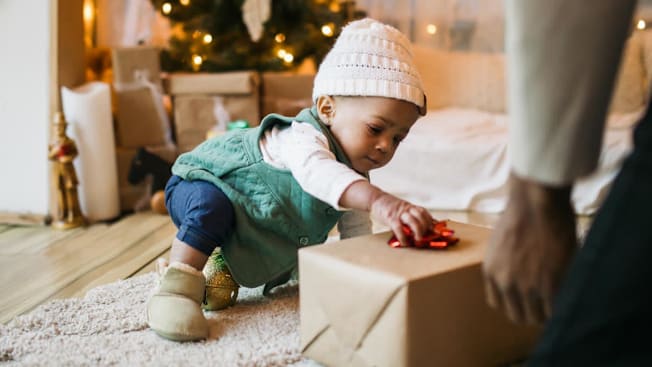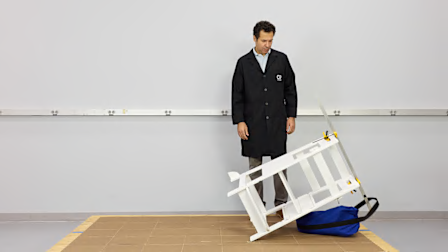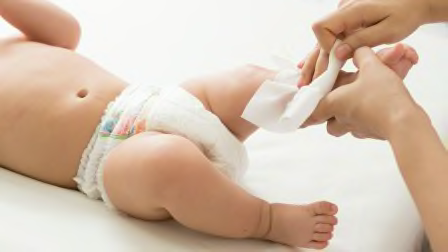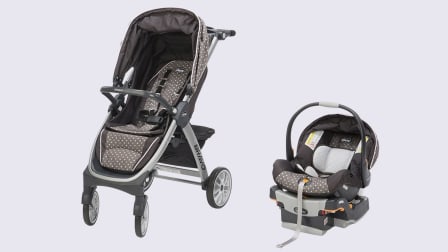Holiday Babyproofing Tips Experts Want Parents to Know
Pediatric experts share how to keep children safe during the busy holiday season

The hustle and bustle of the holiday season may have you focused on hosting family, wrapping presents, and surviving holiday travel with little kids. But a bit of holiday babyproofing could mean the difference between “all is calm, all is bright” and an unexpected trip to urgent care. CR talked with pediatric care experts about what you can do to keep your family safe during a busy season.
No Small Batteries—Period
Batteries continue to be a major source of concern for parents and doctors, specifically those smaller than AAA, Long says, such as button batteries.
“These batteries are dangerous because when a child swallows one, they can become stuck—‘impacted’ is the medical term,” she says. “When stuck in that one place for more than 2 hours, they can leak acid or create an electrical current, which causes corrosion of the tissues. That can cause superficial injury at first, but then over time, ulceration and even perforation.” She has also spoken on Instagram about how button batteries are even more dangerous now than in decades past.
Other than in toys, you may also find button batteries unsecured in remote controls, watches, Apple AirTags, and other items. In 2022 Reese’s Law was passed, mandating that consumer products containing button cell or coin batteries have tougher battery access (for example, needing a screwdriver or coin to open the battery compartment). There are also special packaging requirements for cell and button batteries that went into effect in February 2023. (In 2024 the CPSC proposed additional rules that would apply specifically to toys with these types of batteries, but they haven’t gone into effect yet.)
Even with regulations that now require consumer products to have these batteries secured enough so that kids can’t get them—along with a warning label—parents should still use caution. Long says if she does need button batteries, she chooses the ones with extra child safety layers that “simply serve as a last line of deterrence.”
In 2020 Duracell released a button battery with a bitter taste in an effort to discourage young children from swallowing it. And Energizer recently released a battery that, along with a bitter taste, also releases a blue dye when it meets saliva, giving parents a heads-up that a child has had a cell battery in their mouth.
Young also avoids toys with magnets. “Eating two or more may cause the magnets to come together inside the intestines and lead to necrosis or perforation of the intestinal wall,” he says. “This is also a life-threatening condition.”
Kiss Under the Artificial Mistletoe
You may have thought about potentially toxic plants if you have pets around, but in households with children, mistletoe should pose similar concerns. Long says that while American mistletoe is less toxic than the European variety, artificial sprigs are still safer than real. “I’m not going to stake my kids’ health on whether or not my local garden shop used American or imported European mistletoe,” she says. “As long as I have kids or pets in the house, I’ll use artificial mistletoe.” Long cites research on Poison.org showing that 92 percent of cases of mistletoe exposure involved children. Fortunately, none of those cases resulted in a fatality, and some children didn’t experience any symptoms; the most common were gastrointestinal issues.
So keep the mistletoe up high for safety, where tradition says it goes anyway. Long also says that poinsettia can cause problems for those with latex allergies, and others might have irritation to the skin, eyes, or stomach if they touch or ingest it.
Danger-Proof Your Holiday Decorations
Parents should keep an eye out for decoration-related injuries starting earlier than they might think. Research shows that emergency room visits for kids spike the Sunday after Thanksgiving, with a surprising decrease on Christmas day and another spike closer to New Year’s Day. This may suggest that decorating earlier in the season can be a source of extra cheer—but also extra risk for injuries.
“I have seen babies eating wrapping papers and ornaments,” Young says. “Small ornaments and toys may even end up in children’s ears and noses.”
Long adds that decorations she’d never have in her house are glass or breakable ornaments on a tree if toddlers are there.
New Wheels and Ice Don’t Mix
Nothing ruins a holiday like a bike, ride-on toy, hoverboard, or other motorized fun mixed with ice or snow.
“Typically in the colder climates, it is injuries related to icy conditions and kids having the wonderful, amazing freedom to explore the outdoors and their own limits,” says Jennifer Walker, a registered nurse and co-founder of Moms on Call. “The great news is that very few of these accidents are life-threatening, although they most definitely reschedule the holidays. The best thing to do is to make sure your kids have helmets and adequate supervision, and recognize that not all accidents are preventable.”
Long says that sometimes it’s not what’s gifted but what’s missing from the gift. “Injuries [are common] from gifted wheeled or moving toys like skateboards, Rollerblades, skates, scooters, or hoverboards,” she says. “That’s especially even worse when someone buys them a toy but not the required safety equipment, like a bike without the helmet or Rollerblades or a hoverboard without a helmet and elbow and knee and wrist guards.” Gift givers should keep this in mind. Or parents can have their kids hold off giving their new gift a spin until they have the right protective gear.
With the rising popularity of e-bikes, a 2024 study has shown a corresponding rise in e-bike-related accidents, especially when children don’t wear helmets. E-bike purchases, injuries, and hospitalizations have all significantly increased.
Watch Children Around Unfamiliar Pets
While your own dog might be used to your baby or toddler’s desire to attempt to ride it like a pony or brush its hair, other pets might not be so accommodating. Do your children know how to deal with your great aunt’s fussy dog? If not, Walker recommends giving them the basics of pet safety in advance of meeting new furry friends at the family holiday party: “Do not approach unfamiliar animals even if they seem friendly. Do not put yourself between a dog and its food. Even friendly pets can get too excited, so always have an adult present for playtime.”
Invest in a $3 Pack of Outlet Covers
Don’t assume that your relative’s older house has safety plugs for outlets to keep young and curious kids safe. Walker suggests that you bring your own pack of safety outlet covers for your baby’s play space. She also recommends avoiding running any electric cords through areas where children will be playing. You should also consider taking a portable play yard wherever you go to keep your baby contained in a safe space.
Babyproofing, Room by Room
Overwhelmed by the idea of babyproofing and not sure where to start? CR’s expert-backed checklist breaks down your babyproofing to-do list room by room.
Watch for Falling Turkeys(!)
On a lighter note, Walker remembers her most interesting call related to holiday safety. “I received a call as an after-hours nurse over the holidays,” she says. “The message that was left stated, ‘a turkey fell on our child’s head.’ One can imagine my surprise and interest in this family’s call. Here’s what happened: This family had a freezer where the turkey was being stored on the top shelf, and the frozen turkey slipped out of their hands as they were getting it out of the freezer and fell on their child’s head. Luckily, it was a small turkey and the child was just fine.”
Here’s hoping that with some planning, your family enjoys a safe and peaceful holiday season—falling turkeys notwithstanding.




















